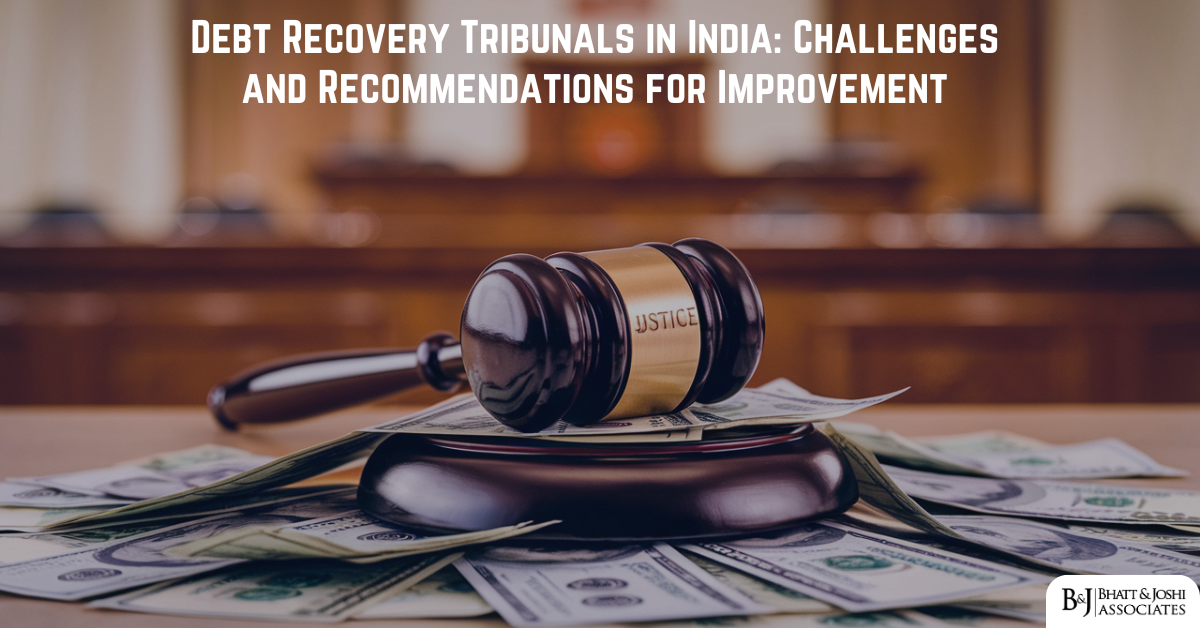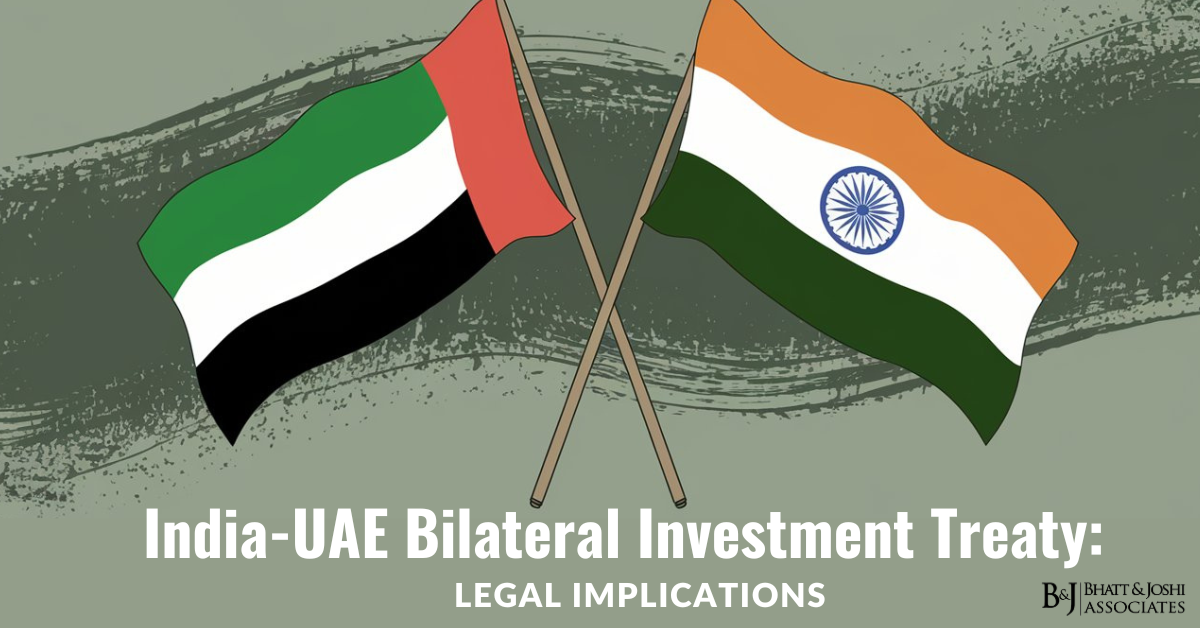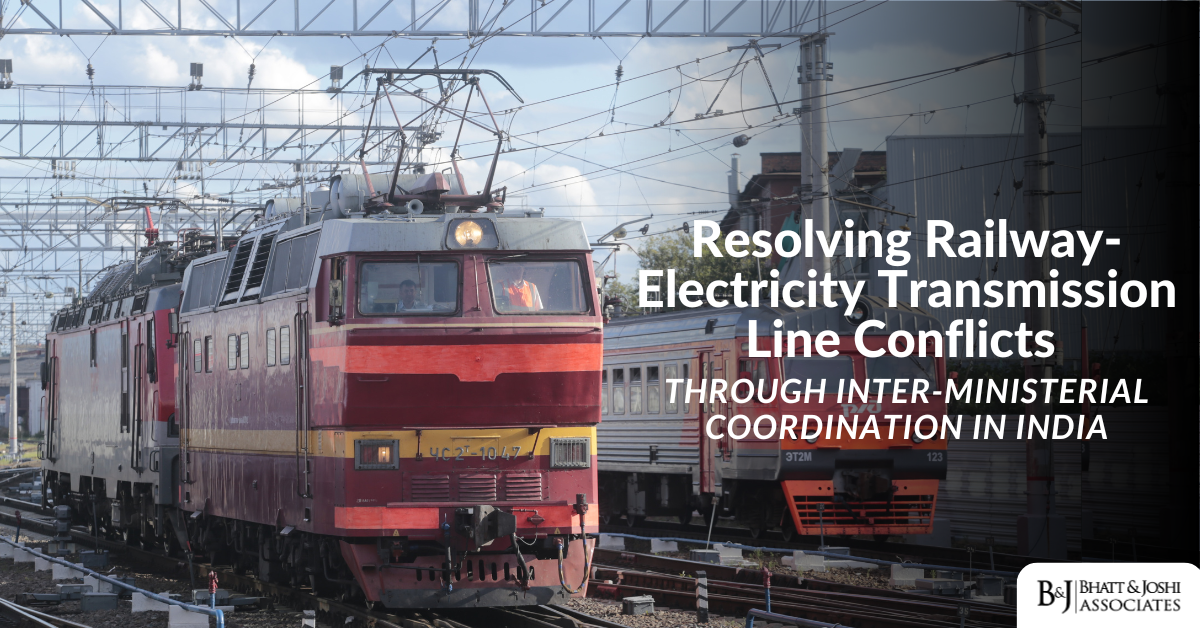Introduction
The Indian banking sector has long grappled with the challenge of mounting non-performing assets (NPAs), which pose a significant threat to banks’ financial health and the overall stability of the financial system. To address this issue and provide banks and financial institutions with a speedier mechanism for debt recovery, the government established Debt Recovery Tribunals (DRTs) in 1993. This article examines the functioning of debt recovery tribunals in india, the challenges they face, and potential solutions to improve their effectiveness in facilitating debt recovery.
Background and Legal Framework
Establishment of Debt Recovery Tribunals in India
Prior to the establishment of DRTs, banks and financial institutions had to rely on ordinary civil courts for debt recovery cases. This process was often extremely time-consuming, with cases dragging on for years or even decades. The banking sector faced significant difficulties in recovering loans and enforcing securities, resulting in a substantial portion of funds being blocked in litigation. The Committee on Financial Systems, headed by Shri M Narasimhan, considered the setting up of special tribunals with special powers for adjudication and speedy recovery as critical to the successful implementation of financial sector reforms. The Tiwari Committee, set up to examine the legal difficulties faced by banks, recommended the creation of special tribunals to expedite the debt recovery process.
Recovery of Debts Due to Banks and Financial Institutions Act, 1993
Based on these recommendations, the Recovery of Debts Due to Banks and Financial Institutions Act (RDDBFI Act) was enacted in 1993. This legislation provided for the establishment of DRTs and Debt Recovery Appellate Tribunals (DRATs) to adjudicate debt recovery cases. The Act aimed to provide a specialized forum with streamlined procedures for faster adjudication. It defined the jurisdiction and powers of DRTs, outlined the procedure for filing applications, and provided for the appointment of Presiding Officers and other staff. The RDDBFI Act marked a significant shift in the approach to debt recovery by creating a dedicated mechanism outside the regular court system.
Securitization and Reconstruction of Financial Assets and Enforcement of Security Interest Act, 2002
To further strengthen the debt recovery framework, the Securitization and Reconstruction of Financial Assets and Enforcement of Security Interest Act (SARFAESI Act) was passed in 2002. This Act empowered banks to take possession of secured assets and sell them without court intervention. It introduced the concept of securitization and allowed banks to transfer their non-performing assets to specialized institutions called Asset Reconstruction Companies. The SARFAESI Act provided banks with an additional tool for debt recovery, complementing the DRT mechanism. DRTs were given the authority to hear appeals against actions taken under the SARFAESI Act, thus expanding their role in the debt recovery process.
Functioning of Debt Recovery Tribunals in India
Jurisdiction and Powers of Debt Recovery Tribunals
Debt Recovery Tribunals in India have jurisdiction to entertain and decide applications from banks and financial institutions for recovery of debts due to them. The term “debt” under the RDDBFI Act includes any liability (inclusive of interest) which is claimed as due from any person by a bank or financial institution. DRTs are empowered to pass comprehensive orders and have all the powers vested in a civil court under the Code of Civil Procedure. They can issue summons, discovery and inspection orders, receive evidence on affidavits, and enforce the attendance of witnesses. DRTs can hear cross suits, counterclaims, and allow set-offs. However, they cannot adjudicate on matters related to criminal negligence, breach of contract, or deficiency in services. The jurisdiction of civil courts is expressly barred in matters that fall within the purview of DRTs, except for the constitutional jurisdiction of High Courts and the Supreme Court.
Composition and Structure of Debt Recovery Tribunals
Each DRT is presided over by a Presiding Officer, who is the sole judicial authority to hear and pass orders. The Presiding Officer is appointed by the Central Government and must be qualified to be a District Judge. DRTs also have Recovery Officers to assist in the execution of orders. The Recovery Officer is responsible for executing the recovery certificates issued by the Presiding Officer and has powers similar to those of a civil court executing a decree. Appeals against DRT orders lie with the Debt Recovery Appellate Tribunal (DRAT). The DRAT is headed by a Chairperson, who must be or have been or be qualified to be a Judge of a High Court. This structure aims to provide a specialized and hierarchical mechanism for debt recovery.
Procedural Aspects of Debt Recovery Tribunal Proceedings
The RDDBFI Act prescribes a summary procedure for DRTs, aimed at faster disposal of cases. While the strict rules of the Civil Procedure Code do not apply, principles of natural justice must be followed. DRTs have the power to regulate their own procedure for exercising their powers. The Act lays down specific timelines for various stages of the proceedings, such as filing of written statements, passing of orders, and disposal of applications. DRTs can appoint receivers, pass ex-parte orders, and review their own decisions. The Act also provides for interim orders and attachments before judgment to secure the interests of the applicant bank or financial institution. The procedural framework is designed to balance the need for expeditious recovery with the principles of fair hearing and natural justice.
Challenges Faced by Debt Recovery Tribunals in India
Case Backlogs and Delays in Debt Recovery Proceedings
One of the most significant problems plaguing DRTs is the enormous backlog of cases and consequent delays in disposal. As of 2016, the pendency of cases in DRTs stood at over 50,000, with many cases taking years for resolution. This defeats the very purpose of establishing specialized tribunals for expedited recovery. The reasons for these backlogs are multifaceted, including an inadequate number of DRTs to handle the volume of cases, frequent adjournments, and complex legal issues that require detailed hearings. The delay in disposal not only affects the recovery process for banks but also impacts the overall financial system by tying up resources in unproductive assets.
Inadequate Infrastructure and Resources in Debt Recovery Tribunals
Many DRTs lack adequate physical infrastructure, technological resources, and support staff. This hampers their ability to handle the large volume of cases efficiently. The shortage of Presiding Officers and frequent vacancies also contribute to delays. Many DRTs operate from rented premises that are not suitable for judicial functions. There is often a lack of basic facilities like proper courtrooms, filing systems, and IT infrastructure. The absence of a comprehensive case management system in many DRTs further adds to the inefficiency. The inadequate infrastructure not only affects the speed of disposal but also impacts the quality of adjudication.
Jurisdictional Conflicts between Debt Recovery Tribunals and Civil Courts
Despite the RDDBFI Act’s provisions, there have been instances of jurisdictional conflicts between DRTs and civil courts. Some matters related to debt recovery continue to be filed in civil courts, leading to parallel proceedings and further delays. The lack of clarity on certain aspects of DRT jurisdiction, especially in cases involving complex legal issues or allegations of fraud, has led to conflicting judgments. This jurisdictional overlap not only causes delays but also leads to inconsistent decisions, undermining the credibility of the debt recovery process. The confusion also allows borrowers to engage in forum shopping, further complicating the recovery process.
Procedural Loopholes and Delaying Tactics in Debt Recovery Tribunal Proceedings
Borrowers often exploit procedural loopholes to stall DRT proceedings. Multiple adjournments, filing of frivolous applications, and raising jurisdictional issues are common tactics used to delay the recovery process. The summary procedure prescribed by the Act is often not followed in practice, with proceedings becoming as lengthy and complex as in regular civil courts. The lack of strict adherence to timelines and the reluctance to impose costs for unnecessary adjournments contribute to the problem. These delaying tactics not only prolong the recovery process but also increase the cost of litigation for banks and financial institutions.
Lack of Specialized Expertise in Banking and Financial Laws
Many Presiding Officers and staff in DRTs lack specialized knowledge of banking and financial laws. This sometimes leads to inconsistent decisions and further appeals, prolonging the recovery process. The appointment process for Presiding Officers does not always ensure that individuals with relevant expertise in banking and financial matters are selected. The lack of regular training programs for DRT staff on evolving legal and financial issues further compounds this problem. The absence of specialized knowledge often results in orders that do not adequately address the complexities of financial transactions, leading to increased appeals and further delays in the recovery process.
Judicial Approach to Debt Recovery Tribunal Proceedings
Constitutionality and Scope of Debt Recovery Tribunal Jurisdiction
The functioning of Debt Recovery Tribunals in India has been significantly shaped by judicial interpretations of the RDDBFI Act and related laws. In Union of India v. Delhi High Court Bar Association (2002), the Supreme Court upheld the constitutional validity of the RDDBFI Act while also clarifying the scope of DRT jurisdiction. The court emphasized that DRTs are meant to provide a speedy recovery mechanism and should not be burdened with matters outside their specialized domain. This judgment was crucial in establishing the legitimacy of DRTs as a specialized forum for debt recovery. However, subsequent judgments have sometimes expanded or restricted the scope of DRT jurisdiction, leading to some uncertainty in the legal framework.
Application of Principles of Natural Justice in Debt Recovery Tribunal Proceedings
While DRTs follow summary procedures, courts have consistently held that principles of natural justice cannot be dispensed with. In Mathew Varghese v. M. Amritha Kumar (2014), the Supreme Court emphasized the need for proper notice and opportunity to be heard in SARFAESI proceedings. This approach ensures that while the debt recovery process is expedited, it does not come at the cost of fairness and due process. Courts have struck a balance between the need for speedy recovery and the protection of borrowers’ rights, shaping the procedural aspects of DRT functioning.
Transfer of Cases from Civil Courts to Debt Recovery Tribunals
The issue of transferring pending cases from civil courts to DRTs has seen conflicting judgments. While some decisions have held that consent of parties is not required for such transfers, others have taken a contrary view. This lack of clarity has contributed to jurisdictional overlaps and has sometimes been used as a delaying tactic by borrowers. The uncertainty in this area has impacted the efficiency of the debt recovery process, as cases continue to shuttle between different forums.
Scope of Debt Recovery Tribunal Powers in Complex Legal Matters
Courts have generally interpreted DRT powers broadly to facilitate effective debt recovery. However, in matters involving complex questions of law or allegations of fraud, courts have sometimes favored the jurisdiction of civil courts over DRTs. This approach, while aimed at ensuring that complex legal issues receive thorough consideration, has sometimes led to a dilution of DRT jurisdiction. The challenge lies in striking the right balance between the specialized nature of DRTs and the need to address complex legal issues that may arise in debt recovery cases.
Recent Developments and Reforms in Debt Recovery Tribunals in India
Legislative Amendments to Improve Debt Recovery Tribunal Functioning
Recognizing the challenges faced by debt recovery tribunals in India, the government has initiated several reforms in recent years. The RDDBFI Act was amended in 2016 to introduce several changes aimed at improving DRT functioning. These amendments include setting specific timelines for various stages of proceedings, empowering the government to make uniform procedural rules, and allowing banks to file cases in DRTs having jurisdiction over the area of the bank branch where the debt is pending. The amendments also increased the retirement age of Presiding Officers and introduced provisions for their reappointment, aiming to address the shortage of experienced adjudicators. These legislative changes reflect a concerted effort to streamline DRT procedures and enhance their efficiency.
Increasing Debt Recovery Tribunal Infrastructure and Resources
Steps have been taken to increase the number of DRTs and DRATs across the country. As of 2021, there are 39 DRTs and 5 DRATs operating in India. Efforts are also underway to improve the physical and technological infrastructure of existing tribunals. This includes upgrading court premises, providing better facilities for litigants and lawyers, and enhancing the working environment for DRT staff. The government has also focused on filling vacancies in DRTs more promptly to ensure that tribunals are fully staffed. These measures aim to address the infrastructural gaps that have long plagued the DRT system.
Implementation of Online Case Management System for Debt Recovery Tribunals
An e-DRT project has been launched to digitize DRT operations and enable online filing of cases. This initiative aims to improve case management and reduce procedural delays. The online system includes features like e-filing of applications, digital payment of fees, and electronic service of notices. It also provides for online tracking of case status and digital access to case records. The implementation of this technology-driven system is expected to significantly enhance the efficiency of DRT operations, reduce paperwork, and provide greater transparency in the debt recovery process.
Enhanced Training Programs for Debt Recovery Tribunal Staff
Specialized training programs have been introduced for Presiding Officers and staff of DRTs to enhance their expertise in banking and financial laws. These programs cover various aspects of debt recovery, including interpretation of financial documents, valuation of assets, and recent legal developments in banking law. The training initiatives aim to address the lack of specialized knowledge that has often been cited as a weakness in DRT functioning. By enhancing the expertise of DRT personnel, these programs are expected to improve the quality of adjudication and reduce the number of appeals arising from DRT orders.
Performance Monitoring and Evaluation of Debt Recovery Tribunals
The government has introduced a system for monitoring the performance of DRTs and DRATs, with regular reviews and performance evaluations of Presiding Officers. This includes setting disposal targets, tracking case pendency, and assessing the quality of orders passed. The performance monitoring system aims to introduce greater accountability in DRT functioning and identify areas for improvement. It also provides a basis for recognizing and rewarding efficient performance, thereby motivating DRT staff to enhance their productivity.
Recommendations for Improvement of Debt Recovery Tribunals
Streamlining Procedures in Debt Recovery Tribunal Proceedings
There is a need to further streamline DRT procedures to minimize delays. This could include stricter enforcement of timelines for various stages of proceedings, limiting the number of adjournments, introducing a system of day-to-day hearings for certain categories of cases, and simplifying documentation requirements. The procedural rules should be revised to eliminate unnecessary formalities while ensuring adherence to principles of natural justice. Implementing a fast-track mechanism for cases involving smaller amounts could help in quicker disposal of a large number of pending cases. Additionally, introducing pre-trial conferences to narrow down issues and encourage settlements could significantly reduce the time taken for adjudication.
Expanding Debt Recovery Tribunal Infrastructure and Human Resources
The number of DRTs and DRATs should be increased further to handle the large volume of cases. Each DRT should be adequately staffed with support personnel to assist the Presiding Officer. This expansion should be based on a detailed assessment of case load and geographical distribution of debt recovery cases. Along with increasing the number of tribunals, there is a need to improve the quality of infrastructure, including modernizing court rooms, enhancing library facilities, and providing better amenities for litigants and lawyers. The recruitment process for DRT staff should be streamlined to ensure timely filling of vacancies and selection of qualified personnel.
Enhancing Technology Adoption in Debt Recovery Tribunals
The e-DRT project should be expanded and strengthened. Features like online case filing, virtual hearings, and digital document management should be fully implemented across all DRTs. Artificial intelligence and machine learning technologies could be leveraged for tasks like case categorization, scheduling, and even preliminary assessment of applications. A comprehensive case management system integrated with banks’ NPA databases could provide real-time tracking of recovery proceedings. Implementing secure digital payment systems for court fees and recoveries could further streamline the process. Regular technology audits and upgrades should be conducted to ensure that DRTs remain at the forefront of technological adoption in the judicial system.
Specialized Training and Recruitment for Debt Recovery Tribunal Personnel
A more rigorous process for selecting Presiding Officers with relevant expertise in banking and financial laws should be implemented. This could include a specialized examination or interview process to assess candidates’ knowledge of banking, finance, and relevant laws. Ongoing training programs should be mandatory for all DRT staff to keep them updated on legal and financial developments. These training programs should be designed in collaboration with banking experts, legal professionals, and academicians to ensure comprehensive coverage of relevant topics. Establishing a dedicated training academy for DRT personnel could provide a continuous stream of skilled professionals for the tribunals.
Implementing Alternative Dispute Resolution Mechanisms in Debt Recovery
DRTs should be empowered to use alternative dispute resolution mechanisms like mediation and conciliation to facilitate settlements between banks and borrowers. This could significantly reduce the number of cases that go through full-fledged adjudication. Specialized mediators with expertise in banking and finance should be empaneled to assist in this process. Incentives could be provided for early settlement of cases through these mechanisms. Implementing a mandatory pre-litigation mediation process for certain categories of cases could help in reducing the influx of new cases to DRTs.
Harmonizing Debt Recovery Tribunal Jurisdiction with Other Legal Forums
Clear guidelines should be issued to harmonize the jurisdiction of DRTs with civil courts and other tribunals. The law should be amended to explicitly bar civil courts from entertaining matters within DRT jurisdiction. A mechanism for seamless transfer of cases from civil courts to DRTs should be established to avoid jurisdictional conflicts. The relationship between DRT proceedings and insolvency proceedings under the Insolvency and Bankruptcy Code should be clearly defined to prevent overlaps and conflicts. Regular coordination meetings between DRTs, civil courts, and other relevant tribunals could help in addressing jurisdictional issues and ensuring consistency in approach.
Strengthening Enforcement Mechanisms for Debt Recovery Tribunal Orders
The powers of Recovery Officers should be enhanced to ensure more effective execution of DRT orders. This could include granting them additional powers for attachment and sale of properties, access to debtor information from various databases, and ability to take punitive actions against non-compliant debtors. Stringent penalties should be introduced for non-compliance with DRT orders. The process of executing recovery certificates should be simplified and expedited. Collaboration with law enforcement agencies should be strengthened to assist in the execution of DRT orders, particularly in cases involving willful defaulters.
Introducing Performance-based Incentives for Debt Recovery Tribunal Staff
A system of performance-based incentives for DRT staff, including Presiding Officers, could be introduced to motivate faster disposal of cases. This could include financial rewards, recognition programs, and career advancement opportunities based on disposal rates and quality of adjudication. However, care should be taken to ensure that such incentives do not compromise the quality of justice. The performance evaluation system should be transparent and based on multiple parameters to provide a holistic assessment of an individual’s contribution.
Conducting Regular Performance Audits of Debt Recovery Tribunals
Independent audits of DRT functioning should be conducted regularly to identify bottlenecks and areas for improvement. These audits should cover various aspects of DRT operations, including case disposal rates, quality of orders, adherence to timelines, and utilization of resources. The audit reports should be made public to ensure transparency and accountability. Based on the audit findings, specific improvement plans should be developed for each DRT. Best practices identified through these audits should be documented and shared across all DRTs to promote uniformity and efficiency in functioning.
Implementing Awareness Programs on Debt Recovery Tribunal Procedures
Awareness programs should be conducted for banks, borrowers, and the legal community about DRT procedures to ensure better compliance and reduce frivolous litigation. These programs could include workshops, seminars, and online resources explaining the DRT process, rights and responsibilities of parties, and best practices in debt recovery proceedings. Simplified guides and FAQs should be developed and widely disseminated. Collaborations with educational institutions and professional bodies could help in reaching a wider audience. Increasing awareness about DRT procedures can lead to better prepared applications, fewer procedural errors, and potentially more out-of-court settlements.
Conclusion
Debt Recovery Tribunals in India were established with the laudable objective of providing a speedy mechanism for banks and financial institutions to recover their dues. However, various challenges have hindered their effectiveness in achieving this goal. The enormous backlog of cases, procedural delays, inadequate infrastructure, and jurisdictional conflicts have all contributed to a situation where DRTs often fail to provide the expedited recovery process they were meant to ensure. Recent reforms and legislative amendments have attempted to address some of these issues, but more comprehensive changes are needed. The recommendations proposed in this article aim to strengthen the DRT system by streamlining procedures, enhancing infrastructure and expertise, leveraging technology, and clarifying jurisdictional boundaries. Implementing these reforms is crucial not just for improving the functioning of DRTs, but for addressing the broader challenge of non-performing assets in the Indian banking sector. An efficient and effective debt recovery mechanism is essential for maintaining the financial health of banks and ensuring the stability of the overall financial system. As India aims to become a $5 trillion economy, a robust banking sector capable of efficiently allocating capital and managing risks is indispensable. Strengthening the debt recovery framework through improved DRT functioning can play a significant role in achieving this goal. It is hoped that policymakers and stakeholders will take urgent steps to implement necessary reforms and realize the original vision of DRTs as a specialized, efficient forum for debt recovery. The challenges facing debt recovery tribunals in India are not insurmountable. With the right mix of legal reforms, technological upgrades, capacity building, and procedural improvements, DRTs can be transformed into the effective debt recovery mechanism they were intended to be. This transformation is essential not just for banks and financial institutions, but for the broader goal of fostering a vibrant and resilient financial ecosystem in India.














